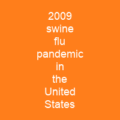Smallpox was an infectious disease caused by one of two virus variants. The last naturally occurring case was diagnosed in October 1977. The World Health Organization certified the global eradication of the disease in 1980. It is estimated the disease killed around 500 million people over the last 100 years of its existence.
About Smallpox in brief

The other infectious disease to have been eradicated, the other being rinderpest in 2011, was smallpox, which has been eliminated from the UK since the 1970s and the US since the 1980s. It is estimated the disease killed around 500 million people over the last 100 years of its existence, as well as six monarchs. There were two forms of the virus, the severe and most common form, with a more extensive rash and higher fever. In addition, there were two very rare and fulminating types, the malignant and hemorrhagic forms, which were usually fatal. The early prodromal stage usually lasted 2–4 days. By days 12–15, the first visible lesions – small reddish spots called enanthem – appeared on mucous membranes of the mouth, tongue, palate, and throat, and temperature fell to near-normal. These lesions rapidly enlarged and ruptured, releasing large amounts of virus into the saliva. The incubation period between contraction and the first obvious contraction was around 12 days. Ninety percent or more of unvaccinated persons of the ordinary smallpox had the second type of disease, the macules, by the second day of the rash. The macules first appeared on the forehead, then rapidly spread to the whole face, the trunk, the proximal portions of extremities, and lastly to distal portions of the extremities. The process took no more than 24 to 36 hours, after which no new lesions appeared.
You want to know more about Smallpox?
This page is based on the article Smallpox published in Wikipedia (as of Nov. 29, 2020) and was automatically summarized using artificial intelligence.







